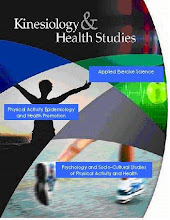
For more information:
Unite for Sight - http://www.uniteforsight.org/what-we-do
Conference - http://www.uniteforsight.org/conference


Do you ever lie awake in the early morning thinking of ways to get outdoors?! No? Well don’t worry…you’re not alone but luckily the term “morning person” describes me perfectly and the early mornings seem to be a great chance to do a little personal “research” into outdoor activities around Kingston! Maple Madness is held every year at Little Cataraqui Creek Conservation Area in March and April. The conservation area itself is speckled with hiking trails throughout the woods and although a bit on the wetter side at the moment, the trails themselves were nothing an old pair of shoes couldn’t handle! There are many other events throughout the year to stay busy in the outdoors at Little Cat including skating in the winter and canoeing in the summer..and within a 10 minute drive from downtown, a great place for an outdoor adventure.
Once in the park, you arrive to the Sugar Shack itself by either walking the trails or hitching a ride with the tractor-pulled covered-wagon. At the Sugar Shack there are guides are around to show how the making of maple syrup has evolved over the centuries…. And more importantly (in my stomachs opinion at least), they are also serve up some tasty tassssty pancakes! (our best estimate was in the 1000s/day!) When we got there it was a unanimous “wagon ride” in lieu of walking to the ol’ Sugar Shack (note – there were many children under the age of three that seemed rather content with the trek). Once off the tractor and in response to my growling stomach it was time for PANCAKES! WITH TWO SCOOPES OF SYRUP! And we’re talking REAL, straight from the trees, not even bottled, LIQUID GOLD! To say they were delicious is an understatement but my “Word Thesaurus” didn’t seem to have a better alternative. After devouring my first flapjack in seconds I understood why the person behind me stated they wanted “12”…they were about 7 years old … Mom quickly interjected.
After the sugar rush hit we decided to go back in the Shack to get a maple candy (for desert of course…) and head up the trail to check out the syrup buckets! The trails are easy to follow and lead you up and around the sprawling forest. The walk itself was a great way to get active on the weekend and a nice way to enjoy the sunshine! On the way back we stopped at the “Chickadee feeding area” to get “in touch with nature” but alas the birds were nowhere in sight and coldness was setting in. We packed ourselves back in the car and got back in town just as the sugar rush was at its end and in time for a well deserved afternoon nap…we were spent…until next Sunday…
Visit their www for more info on upcoming events! http://www.cataraquiregion.on.ca/

During the course of my Master’s and undergraduate degree, I have focused on educating the public about the Human Papillomavirus (HPV). HPV is the most common sexually transmitted infection in the word and it is estimated that 75% of Canadians will get an HPV infection in their lifetime. HPV is contracted by skin-to-skin contact and it is the cause of cervical cancer and genital warts. In fact, during the past decade, studies have shown a firm causal link between cervical cancer and HPV (Bosch, Lorincz, Munoz, Meijer, & Shah, 2002) and HPV RNA has been identified in all investigated specimens of invasive cervical cancer (Bosch & Sanjose, 2007). Yet, despite this strong scientific evidence, public knowledge regarding HPV is lacking (Friedman & Shepeard, 2007).
In June 2006, Merck pharmaceuticals released a prophylactic vaccination that provides protection against HPV strains 16 and 18, which are classified as the top two of the fifteen cancer causing high risk types of HPV, and types 6 and 11 which cause genital warts (Munoz et al., 2003). Yet, given the lack of knowledge about HPV, many individuals are still unaware of how to prevent and protect themselves against HPV (Friedman & Shepeard, 2007). It is therefore necessary to investigate techniques to disseminate information about HPV and the vaccine.
As many other graduate students in the department can attest to, I am dedicated to educating the public about how to protect themselves against HPV. My undergraduate thesis and independent project have focused on how to disseminate information about HPV to young adults using a technique called message framing. In short, message framing refers to how messages are conveyed (Rothman & Salovey, 1997). I plan to continue to apply message framing to promote the HPV vaccine in my Master’s thesis.
It is my hope that one day my research may lead to improved health messages regarding HPV and the HPV vaccination. While I cannot offer concrete results yet, I continue to stand on my soap box telling everyone I know about HPV and asking everyone to pass on my message (and not HPV)!
Stay safe,
Heather
Want to know more?
http://www.hpvinfo.ca/
